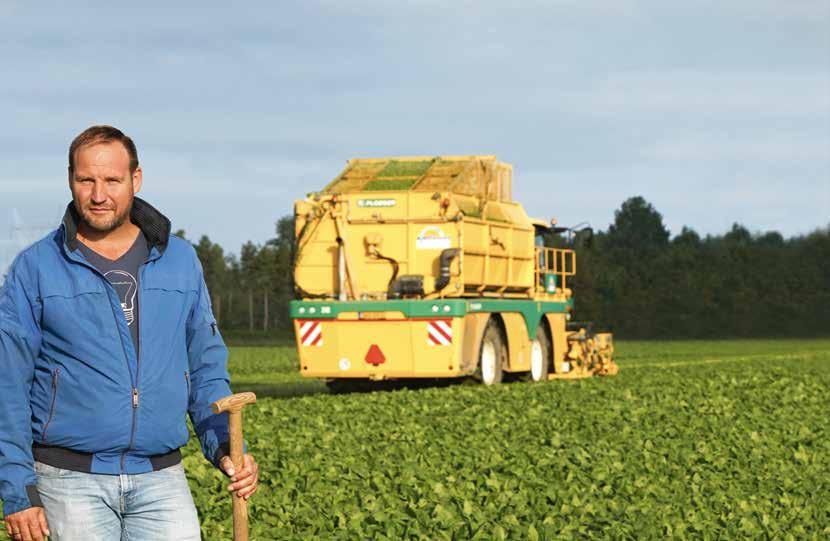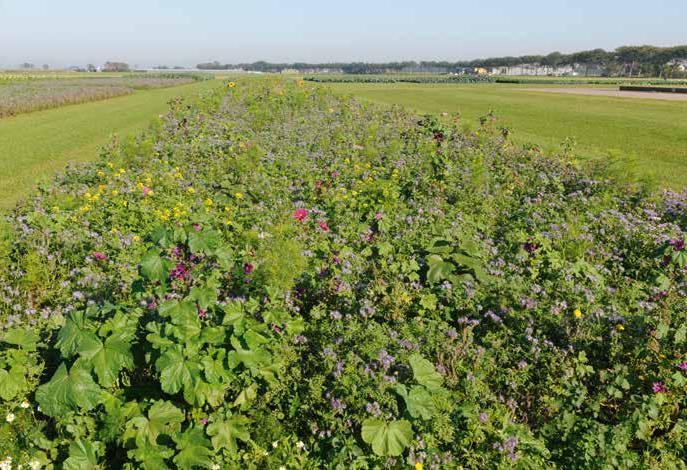
5 minute read
IT TAKES A DIFFERENT MINDSET
ADVISOR CHRISTOFFEL DEN HERDER ON GOING ORGANIC:
AS ANY ORGANIC GROWER WHO STARTED OUT WORKING CONVENTIONALLY KNOWS, THERE’S A LOT MORE TO CONVERSION THAN JUST DITCHING THE SPRAYS AND ARTIFICIAL FERTILIZERS. AGRICULTURAL CONSULTANT CHRISTOFFEL DEN HERDER KNOWS THE CHALLENGES. “GROWERS WHO CHOOSE ORGANIC ARE ENTREPRENEURS WHO DON’T WANT TO BE A NUMBER,” HE SAYS.
CROP KNOWLEDGE AND VARIETYSPECIFIC ADVICE
Organic arable farmers and market gardeners include a greater range of crops in their rotation plans than their non-organic colleagues and often opt for different varieties. Bejo offers a wide selection of seeds, with more than 35 crops and more than 170 varieties suitable for organic cultivation. Our specialists support organic growers with extensive crop knowledge and advice on specific varieties. When they think of organic, the first thing outsiders think of is farming without chemical pesticides and artificial fertilizers. But that’s only part of the story, says agricultural consultant Christoffel den Herder. “Organic cultivation is a whole different way of working. With chemical agents, if you have a problem you can actually fix it afterward. Organic growers have to act in a much more preventative way. You have to know more than the average grower about the crop and the soil. How does the crop look, how deep are the roots, what is the soil going to do, what can you expect with regard to weeds and insect pests, what’s the weather going to do?” He concludes, “You have to look at least two weeks ahead and dare to base your cultivation decisions on that.”
Den Herder speaks from plenty of experience as an advisor on organic arable farming and field vegetables. Previously with the consultancy Delphy, he now works independently under the name Ceres Horti Advice, assisting clients in the Netherlands and abroad. Practically speaking, a farm’s conversion to organic begins as soon as it registers that first field with the authorities. By that point, Den Herder says, the entrepreneur has been thinking about it for a long time. “First of all, you have to discuss
it in depth with your family and your business contacts. I would also start scouting for organic advisors, suppliers and customers at an early stage.”
A longer rotation cycle
One of the big changes after conversion is the need for a much longer crop rotation cycle. Conventional arable farmers tend to use a five- or six-year cycle. Organic requires at least a six-year cycle. Den Herder goes a step further: “I advise an eight- or 10-year cycle. That’s better for preventing soil-borne diseases. Six years is fine, but in that case I’d plan multiple crops within a plant family, say carrots and another umbellifer, like parsnips or celeriac. And then you won’t get the same crop again for another 12 years.”
The greater diversity of crops suits the organic market better, too. That market is more dynamic than newcomers are used to, Den Herder says. “You’re dealing with a greater number of different customers, often smaller volumes, and more deliveries. It’s less in terms of quantity and more market- and customeroriented. It takes a different mindset. >> Christoffel den Herder

GOING ORGANIC? HOLD OFF ON THE CASH CROPS
Conversion costs money. In the EU, once the land is registered, the produce can’t be sold with the organic logo for another two years. For this reason, most growers switch over in stages, converting a few fields a year.
“People are inclined to start growing a load of cash crops as soon as possible,” Den Herder says. “That’s not always smart. Although crops like carrots, chicory, cabbage and onion are highly profitable, they also carry added risks. The costs are higher, and you need a lot of labour. On top of that, you won’t get paid until late the next year, following storage. You do need cash flow, so it’s a good idea to consider growing a faster contract crop, like spinach, beans or peas, alongside your cash crop. That will bring in some income in the short term.”
During the conversion period, resting crops are useful for getting used to the new way of working. In the second year, the crops qualify as “in conversion”. Organic cattle breeders are permitted to use a limited amount of this produce as feed. “That usually brings in more money than sale in the usual market,” Den Herder says, “and it’s also a way of making contacts for manure.”
“Organic growers have to act in a much more preventative way.”

Christoffel den Herder
“You have to not only be a professional grower but also see the opportunities when a customer needs a particular product at short notice.” A rigid crop plan doesn’t suit the changeable market demand. A good crop sequence is important, however. Especially in the transition period, Den Herder bases decisions on a multitude of different factors.
Conversion isn’t an easy alternative for farms that are struggling financially, Den Herder warns. “You shouldn’t switch over out of poverty. You have to be in good shape financially at the beginning, because in the first two years you’ve got the costs of conversion without the higher selling prices of an organic crop. In addition to that, you need to be comfortable with aspects like variable crop yields, changeable market demands, and working with employees. In general, growers who choose organic are entrepreneurs who don’t want to be a number to the big customers, don’t want to be dependent on suppliers, and see it as a challenge to work with others to supply what the market and society want.”
BEING A GOOD EMPLOYER IS IMPORTANT
Labour is one of the biggest challenges. One man or woman can easily run a wellmechanized 80-hectare conventional arable farm. Organic cultivation requires more labour. “With 60 or 70 hectares, you’ll often need to employ someone at peak times,” Den Herder says. “For an intensive crop like onions, you’ll need to allow for 100 or maybe even 200 hours of outside labour per hectare. In other countries, some large farms even budget for 300 or 400 hours.”
The availability of good people is becoming an issue for many businesses. That means you need to be a good employer. “You’ve got to have something to offer people if you want them to come back,” Den Herder says. “In other countries, more and more farms are making sure they’ve got work year round, not just in the field but also in the shed. That way people stay involved and you can hold on to them for longer.”










